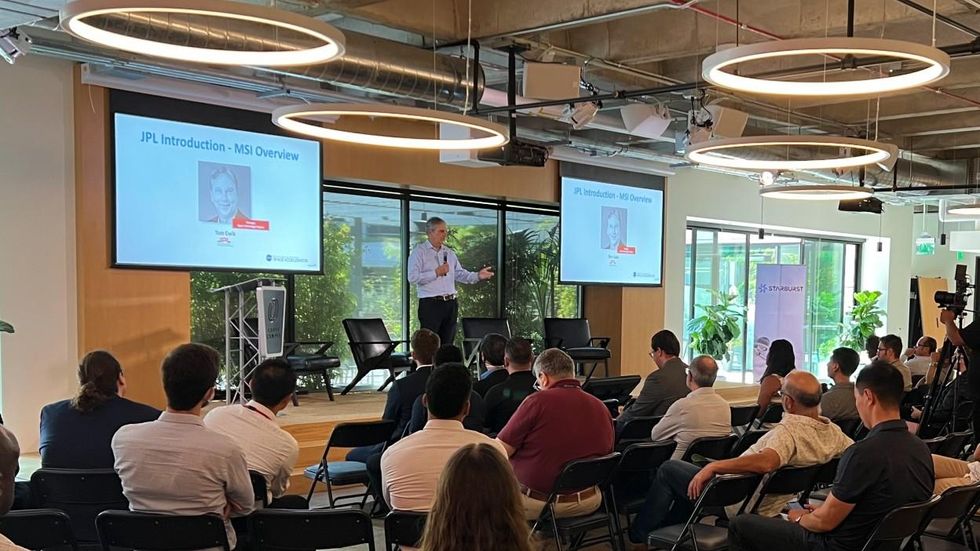Almost every company in existence today has some sort of diversity and inclusion initiative. NASA, however, took theirs one step further — providing $50,000 in funding to three underrepresented groups in academia.
NASA’s Minority Serving Institutions (MSI) partnered with Starburst Aerospace and NASA’s Jet Propulsion Lab (JPL) to work with students as part of their beta space accelerator program. The course was designed to serve as a platform for innovators to build businesses to support technology and economic development.
In the program, students from the University of Massachusetts Boston, California State University and Fayetteville State University, along with faculty mentors, spent 10 weeks developing venture-backable businesses that have applications in multiple markets.
On Wednesday, the projects were presented as business proposals as part of L.A. Tech Week.
“L.A. has long been the aerospace capital of the world, and as we enter a new space economy, it continues to be, and we want to continue to build the industry here,” said Elizabeth Reynolds, managing director at Starburst Aerospace.
The first proposal, Mission Proteus, presented by Nhut Ho, a professor and director of NASA-Sponsored Autonomy Research Center for STEAHM (ARCS) at California State University, was designed to eliminate inefficiencies in existing autonomous software development methodology.

Developers designing for autonomous software face many of the same obstacles as traditional developers, but they also face unique challenges. Proteus wants to provide a platform that unifies development tasks and workflows and allows for rapid testing. Building on NASA’s hard-won knowledge in autonomous development, the goal of Mission Proteus is to enable these systems to grow much more rapidly in other industries. Ho explained that his team wanted to eliminate the “pain” surrounding technical limitations of existing software.
The second proposal, ITX Drones, was presented by Thomas Materdey, senior lecturer of engineering in the College of Science and Mathematics at the University of Massachusetts Boston. The ITX team felt that, while revolutionary, drones today are missing a “real-life component.” The goal of ITX Drones was to create technology that would allow drones to more specifically respond to niche customer needs in ways that existing drones cannot—deliver medicines, provide surveillance or communicate with other drones. “Imagine being able to personally deliver a gift to your sister in Europe without having to wait a week,” Materdey said to the room of onlookers.
To make that a reality, their proposal aims to create drones that are capable of sending and receiving long-range data, have longer battery life and the ability to fly at any time of day. Their design incorporates fixed-wing rotors, precision landing capabilities, and lidar navigation, which would allow the drones to operate with extreme precision in novel environments.
SpireNeural, the final business proposal, would act as a software development company focused on enabling near-real-time data processing for autonomous systems with existing integrated devices. In other words, software that will speed up decision-making for our increasingly connected world.
Grace Vincent, an electrical and computer engineering Ph.D. candidate at North Carolina State University, explained that her team created SpireNueral in response to the California wildfires and the inefficiency of the tech used to detect them.
“How can we reduce overall response time?” she asked the room. “Edge computing.”
Edge computing is computational analyses that are done near the source of the data. SpireNeural was designed as an edge computing software solution that hopes to eliminate issues with wasteful computations, slow response times and power restrictions, instead making informed decisions at the edge.
For example, edge computing software could evaluate and make decisions about how to combat a forest fire at the site of the sensor rather than relaying that information to a central hub, waiting for it to be processed alongside other data and then relaying it to first responders.
The presentations were followed by a brief panel discussion on “Supporting Diversity in industry through investment,” where industry leaders from various venture capitalist firms discussed how the tech industry can work to be more inclusive.

